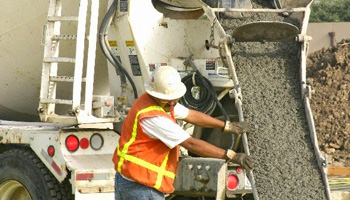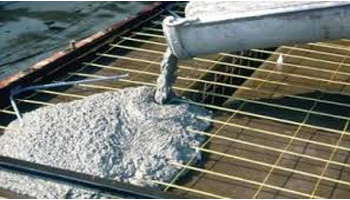You have no items in your shopping cart.
Post Requirement
RMC is a type of concrete, which is a mixture of Portland Cement, Water, Fine (Sand) and Coarse aggregates. It is manufactured in a cement factory or batched plants in specific proportions and transported in a Transit-mixer to the construction sites.
RMC is eco-friendly compared to site mix concrete because mixing is done in closed chambers as it reduces the noise and air pollution.
Types of Ready-Mix-Concrete
There are three types in ready-mix concrete, and they are briefly presented below:
Transit mixed concrete
It is also known as truck mixed concrete, in which materials are batched at a central plant and are thoroughly mixed in the truck in transition. Transit-mixing separate water from the cement and aggregates and allows the concrete to be mixed instantly before using at the job site.

Transit-mixing avoids the problems of early hardening and slump loss that result in delays in transportation. The disadvantage is the capacity of the truck is smaller than the same truck carrying central-mixed concrete.
The first RMC plant in India was set up in Pune, 1992.
Shrink-mixed concrete
It is used to increase the truck's load capacity where concrete is mixed at the plant to shrink the volume of the concrete. The balance mixing of concrete is completed in the truck during transit time or at the construction site.

Central-mixed concrete
Sometimes, the central mixed plants are referred to as wet batch plants. The concrete is batched and completely mixed in a stationary mixer at the plant site before discharging it into the truck mixers.
The advantages of central-mixed concrete are better quality control, consistency, higher production capability and reduce wear on the truck mixer drums.

RMC was first used for the construction of Bhakra Nangal Dam Project in Bilaspur, Himachal Pradesh.
Volumetric mobile mixer is also a truck that contains raw materials and water, which can be mixed on the truck at the job site. The on-truck mixing at the job site eliminates the problems of ready-mix concrete.
Advantages of Ready-Mix Concrete
- Better quality concrete is produced as it is made from consistent methods and in advanced equipment.
- No need to store construction materials at the site.
- Labour associated with the production of concrete is eliminated, thereby reducing labour cost.
- Air and Noise pollution at the job site is reduced.
- Wastage of basic materials at the site is avoided.
- Reduce the time required for construction.
- No delays in completing major projects like constructing dams, roads, bridges, tunnels, etc.
- Economy in the use of raw materials results in conservation of natural resources.
- Safe work practices - No disruption in the project schedules.
- Environment-friendly.
Disadvantages of Ready-Mix Concrete
- Requires huge initial investment.
- Not suitable for small projects (less quantity of concrete is required).
- Need an effective transportation system from the batching plant to the job site.
- Labour should be ready at the site to cast the concrete in position without any delay to avoid slumps in the mixture.
- Concrete has limited time and should be used within 210 minutes of batching the plant. Traffic jam or breakdown of the vehicle can create a problem.
Quality Control is very important as it has to be mixed with a proper dose of admixtures and transported to different locations. All the ingredients used for the mixture of concrete are thoroughly tested for quality and physical properties based on Indian Standard Codes. Everything is taken care of by batching plants while manufacturing the concrete mixture to produce highly durable, sustainable and premier quality for long-lasting structures.
Check Out: Types of Cement Concretes used in Construction
Technically Reviewed by Rajesh Pagadala, MS, Founder & CEO - BuildersMart. Written by Vani paspula, Content Manager.
Vani Paspula
Ramesh
posted on Jan 7, 2020 5:35:40 PM













Lokya
posted on Jan 17, 2020 2:23:54 PM